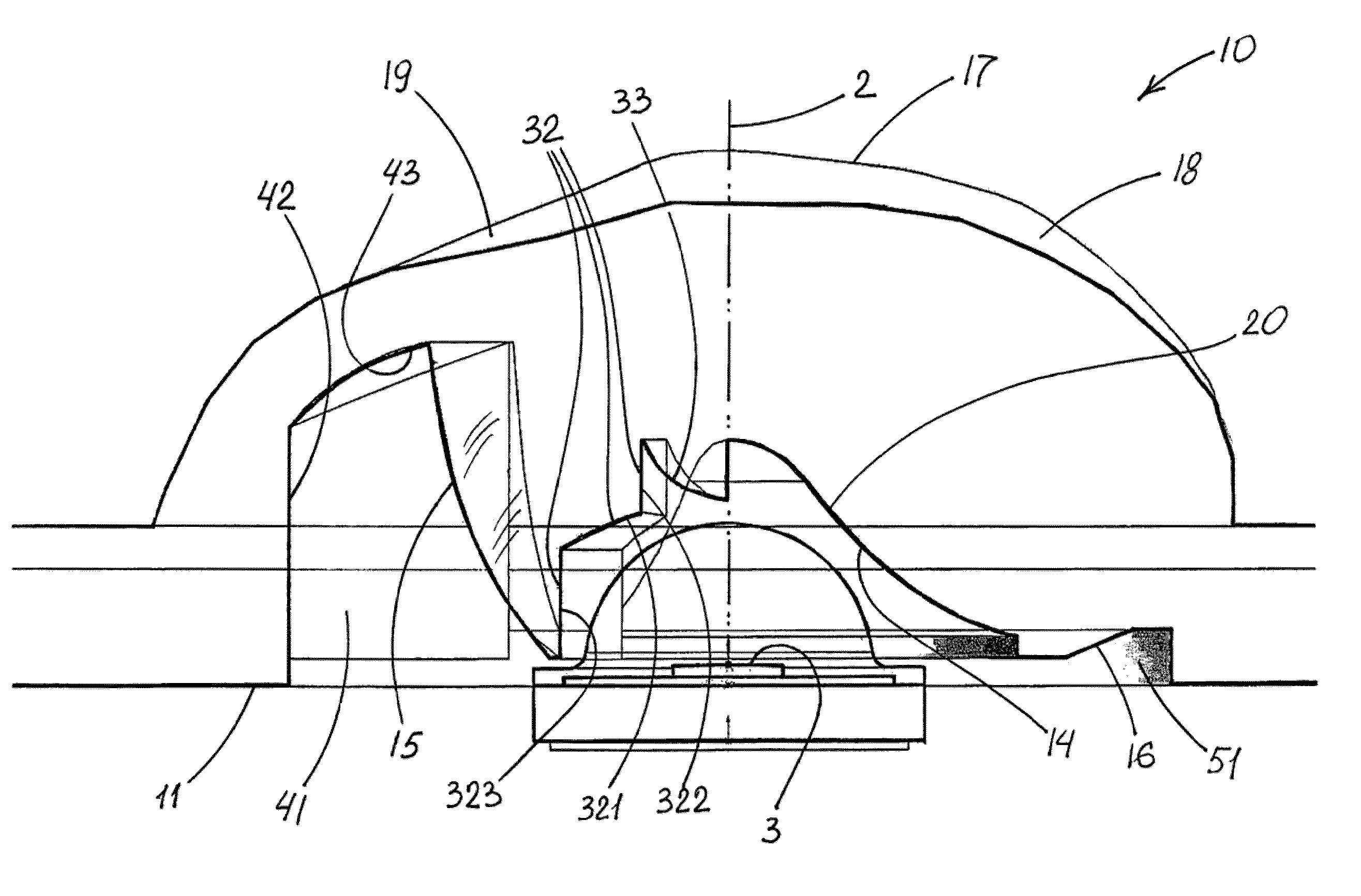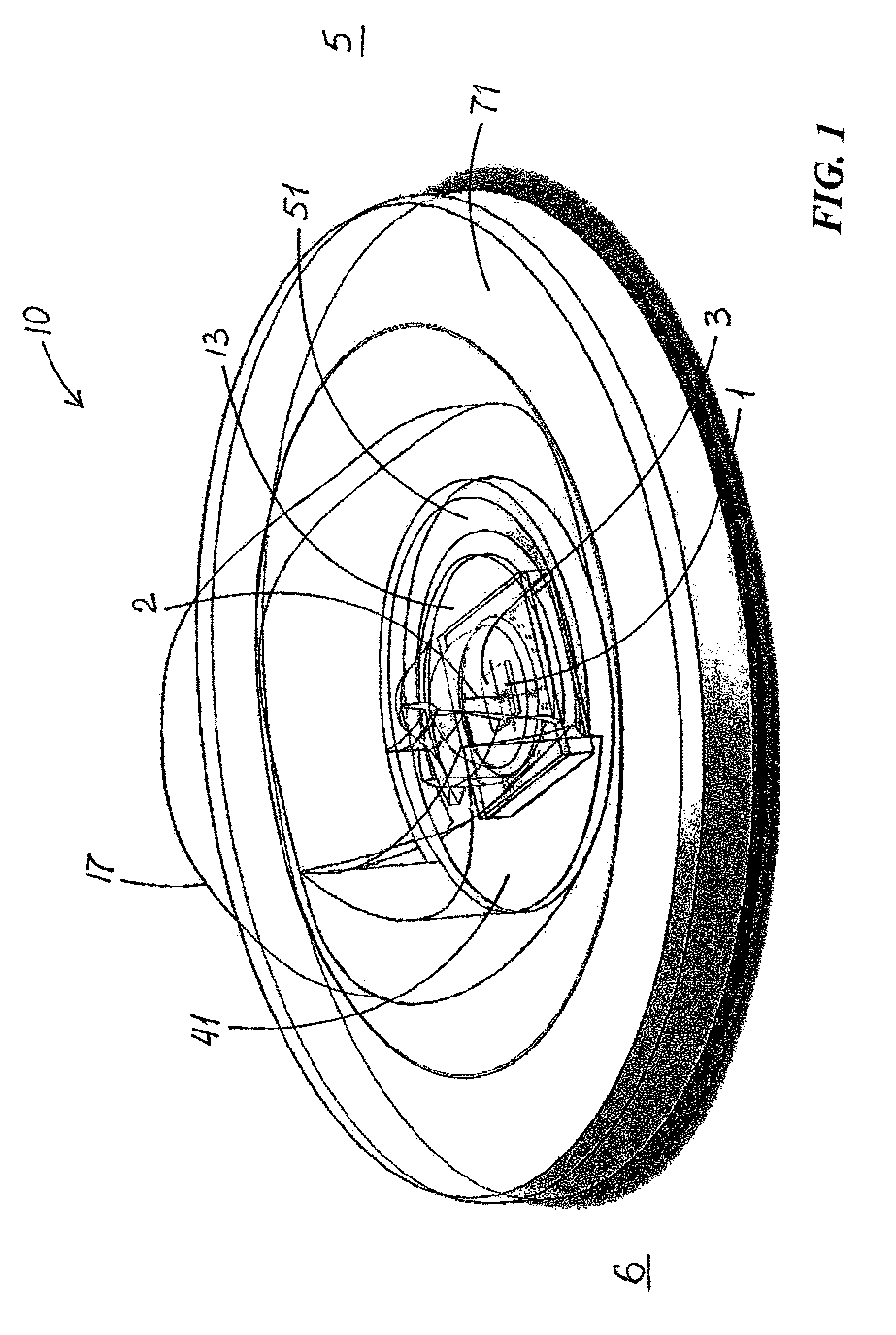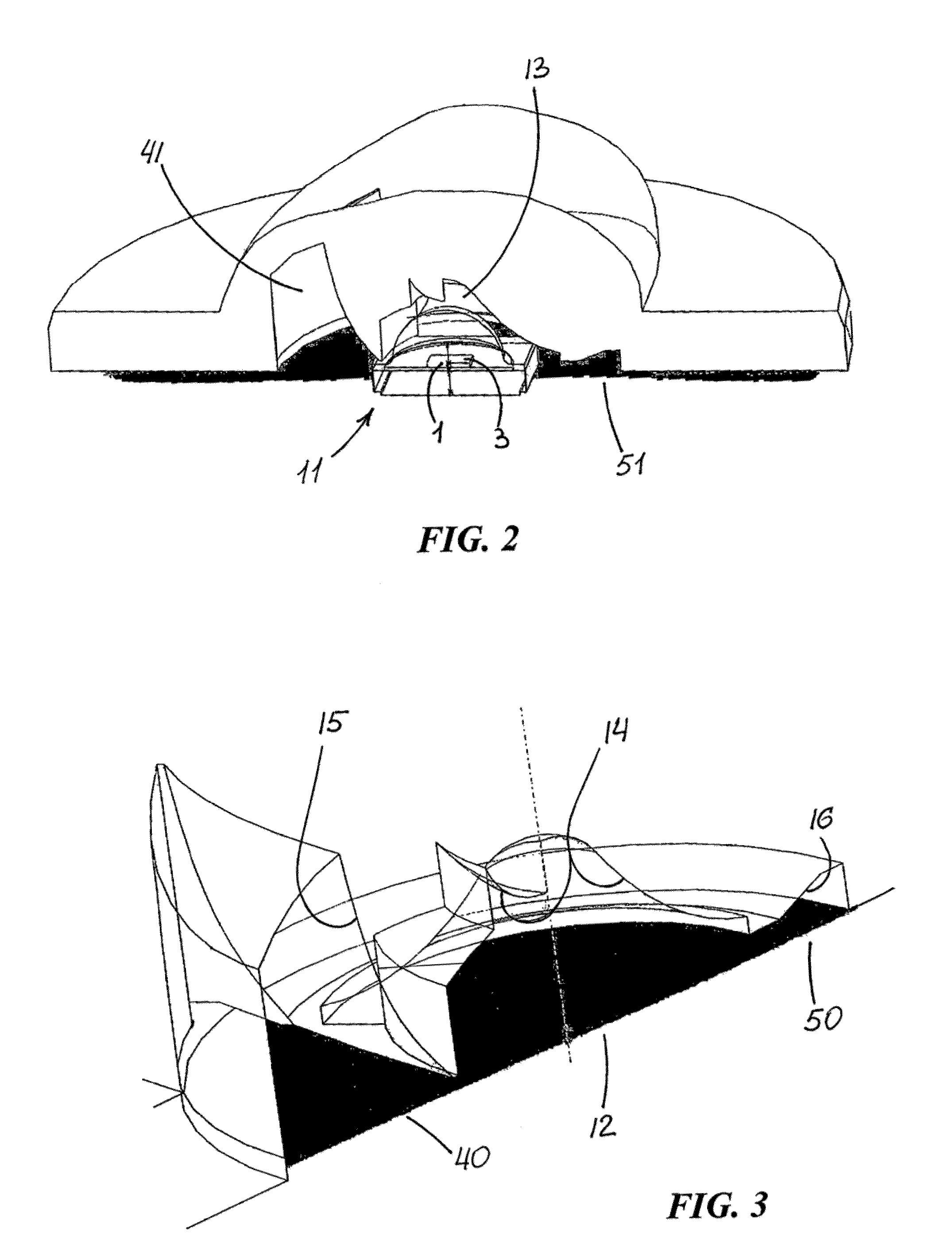Lens with controlled backlight management
a backlight management and led light technology, applied in the field of led light fixtures, can solve the problems of less than desirable lighting patterns, less than fully efficient illumination patterns, and less than desirable led-emitted light, and achieve the effect of efficient use of led ligh
- Summary
- Abstract
- Description
- Claims
- Application Information
AI Technical Summary
Benefits of technology
Problems solved by technology
Method used
Image
Examples
Embodiment Construction
[0048]FIGS. 1-20 illustrate lens 10 which is a preferred embodiment of the invention. Lens 10 is for distribution of light predominantly toward a preferential side 5 from a light emitter 1 which has an emitter axis 2 and defines an emitter plane 3. As seen at least in FIGS. 1 and 2, light emitter 1 is an LED package which is free of a surrounding reflective surface.
[0049]Lens 10 has an emitter-adjacent base end 11 which forms an emitter-receiving opening 12 to an emitter-surrounding cavity 13 defined by an inner surface 14. Cavity 13 defines a space between emitter 1 and an inner-cavity surface 14 such that emitter light goes through air to enter lens material at inner-cavity surface 14. Because air and the lens material, which may be acrylic or other suitable material, have different refraction indexes, this results in bending of the light at inner-cavity surface 14.
[0050]Inner surface 14 includes a front sector 20 centered on preferential side 5 and a back sector 30 centered on th...
PUM
 Login to View More
Login to View More Abstract
Description
Claims
Application Information
 Login to View More
Login to View More - R&D
- Intellectual Property
- Life Sciences
- Materials
- Tech Scout
- Unparalleled Data Quality
- Higher Quality Content
- 60% Fewer Hallucinations
Browse by: Latest US Patents, China's latest patents, Technical Efficacy Thesaurus, Application Domain, Technology Topic, Popular Technical Reports.
© 2025 PatSnap. All rights reserved.Legal|Privacy policy|Modern Slavery Act Transparency Statement|Sitemap|About US| Contact US: help@patsnap.com



